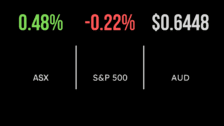Overvalued, undervalued or fair value?
Crystal balls and fortune cookies
Is history an investment guide, the rhyme not repeat version? Those that offer advice on asset allocation rely heavily on past data to support their view of future returns. At its simplest there is mean reversion to trend. Perhaps the challenge is what trend to revert to. There are a few unique events and structural changes, or a plethora of potentially conflicting trends that can be interpreted to suit the cause.
Have sympathy for bond gurus grappling with a rather unusual setup, to put it mildly. There are watchable animated discussions on historic new lows and highs. There are references to a similar pattern in the 1980’s, though under totally different circumstances. Does that trend line tell us what to do now? Probably not, but what else can be the benchmark for a decision on bonds today, assuming a 2-3 year time frame.
Then there are those waffling on about absolute high equity valuations, yet just fine equity risk premiums suggesting discarding the first and embracing the other. Deeper down is the growth versus value teeth gnashing. Is it because value data is no longer relevant particularly price/book, or is it for other reasons such as letting tech become a monopoly? Would you rely on the historical performance of REITs to base an investment case without discomfort that there may be dated assets that change the long-term outlook?
Many will subscribe to services that provide asset class forecasts. The accuracy fades with revisions or the time frame where the soothsayers are rarely held accountable for their prognostications. Short term (under six months) momentum can be relatively reliable, determined by reaction to news, flows, and technical factors. Few (none) can forecast the big disruptions or rallies from unexpected events.
Long term (10 year) predictions are within the range of probabilities, usually close to historic asset returns. Yet most investors are focused on the intermediary time frame, say 1-3 years, the most unreliable forecasting period.
There are even those that spruik a surprisingly high level of accuracy, one viewed recently has private equity returns for the next five years as 7.9% p.a, and begs the question what happened to the 0.1% to round the number to 8%? Excessive reliance on Australian dividends mislead to a persistently high weight to local equities at the expense of international allocations for many years. Today there is a big lean towards Europe and Japan at the expense of the US paralleling the argument for value – that it’s now time.
A key problem is that most forecasts are based on indices. For equities that may hold some relevance but for fixed income, the index is of low relevance for most private portfolios.
Undue reliance on market predictions finds its way into client expectations of irrational certainty on the performance pattern of their portfolios. Nor should one think the large well regarded institutional funds are necessarily better. The Future fund with its absolute return objective has often let its cash allocation build up just as equity markets accelerated away. Few big super funds called the duration rally well and exited bonds far too early.
In practise most advisers are guided by judgement and what makes sense. Equity allocations in the 40-60% range has a level of comfort. Low exposure to rates is logical given bond yields. Set piece forecasts may provide a comfort blanket, but an energetic interest in markets while avoiding pet theories is probably just as good.











